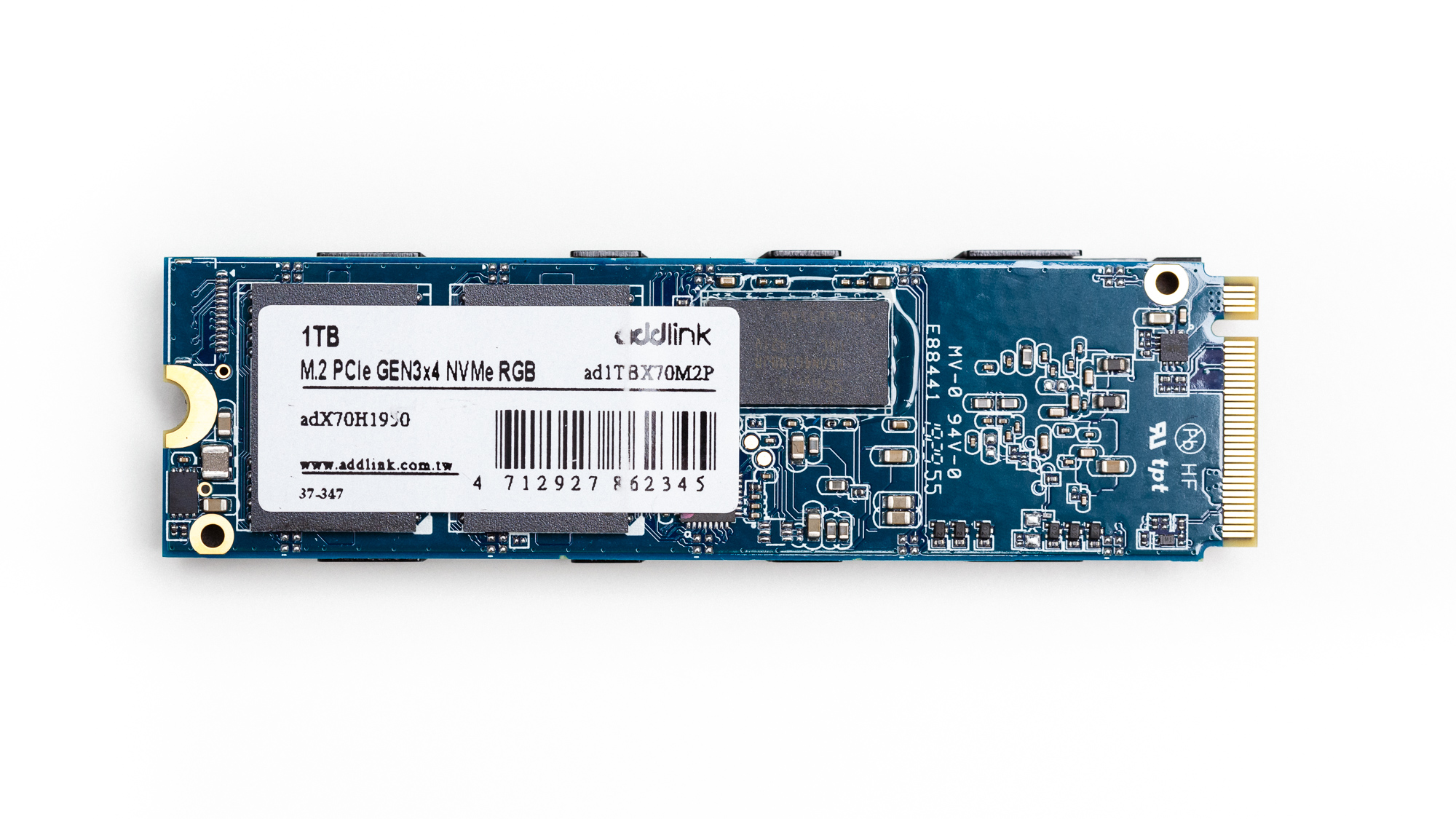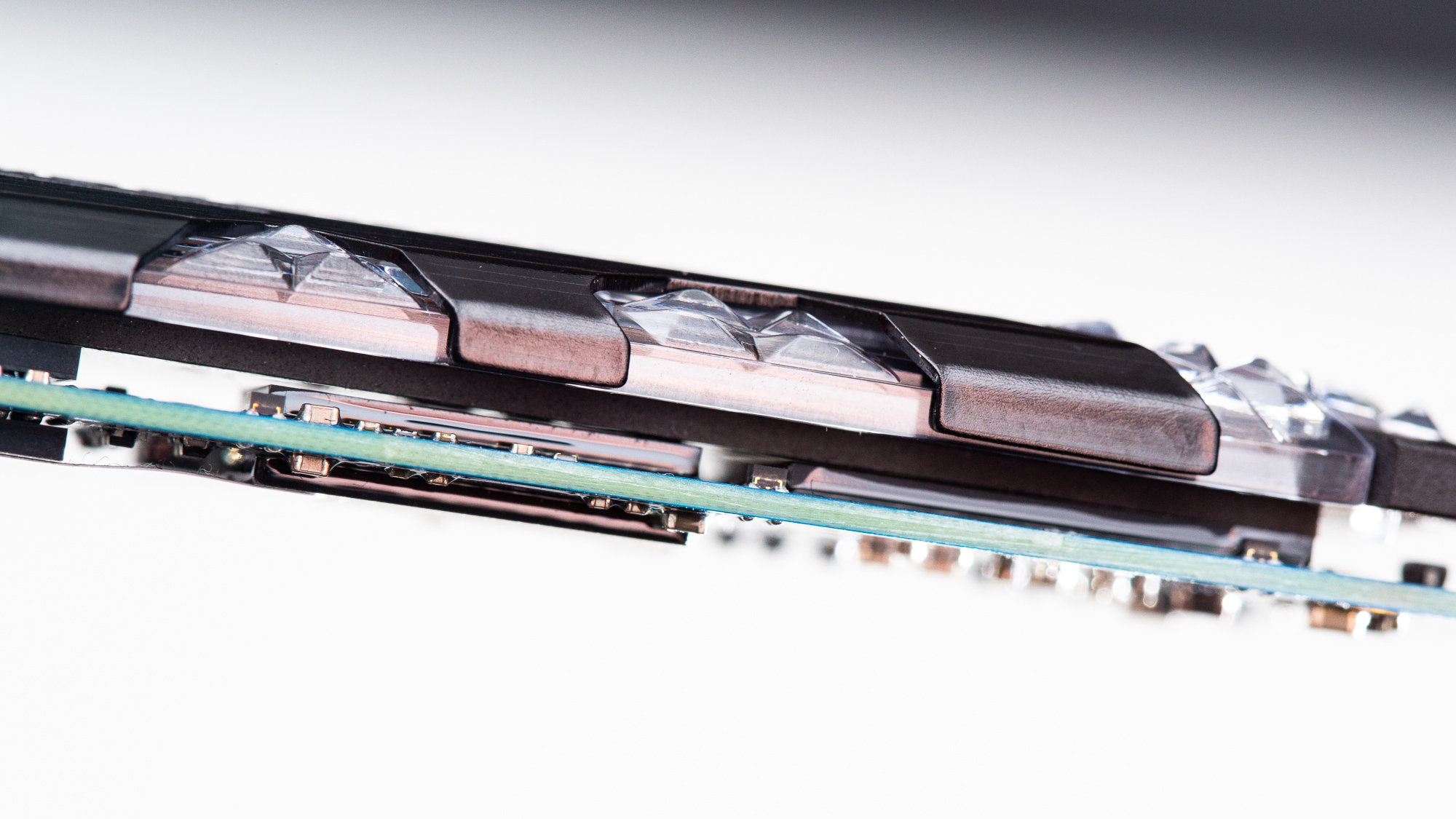Tom's Hardware Verdict
Priced at a slight premium over its non-RGB competitors, addlink’s X70 RGB looks to be a viable option for those looking to buy some flashy storage.
Pros
- +
Solid performance
- +
Attractive RGB lighting and heatsink
- +
Class-leading endurance
- +
5-year warranty
Cons
- -
Some lighting settings may affect performance
- -
No SSD toolbox or cloning software support
- -
Small write cache
Why you can trust Tom's Hardware
Looking for some RGB storage bling to light up your next system build? This new addlink SSD just might pique your interest. With a Phison E12 NVMe under the hood, addlink’s X70 RGB M.2 NVMe SSD steps into the ring promising to hit multi-gigabyte per second performance with ease. And, touting a black and diamond-cut RGB-accented design, it’s sure to complement themed builds quite nicely.
There aren’t too many options to choose from when searching for an RGB SSD for your build. Team Group’s Delta RGB, Delta MAX, and Kingston’s HyperX Fury RGB have you covered if you’re on the hunt for something in the SATA 2.5” form factor. These SSDs all look great, but are limited to SATA 6Gbps performance and require additional cabling for lighting control. Ultimately, that extra wiring might end up cluttering up your build just so you can add some flashy lights on your storage device, rather than adding to the aesthetic.
Alternatively, you could go for one of the few RGB NVMe SSDs on the market. They often contribute to a cleaner aesthetic, not to mention offer performance benefits. We’ve reviewed quite a few of them, too. The Adata XPG Spectrix S40G looks great, but performance lags a bit due to the Realtek NVMe controller. Gigabyte’s Phison E12-powered Aorus RGB looks good and performs well, but there are limitations to controlling its RGB lighting. We currently rank Patriot’s Viper VPR100 as one of the best SSDs available, but addlink’s X70 RGB could prove a viable alternative to this group.
Specifications
| Product | X70 RGB 256GB | X70 RGB 512GB | X70 RGB 1TB | X70 RGB 2TB |
|---|---|---|---|---|
| Pricing | $47.99 | $94.99 | $164.99 | $329.99 |
| Capacity (User / Raw) | 256GB / 256GB | 512GB / 512GB | 1024GB / 1024GB | 2048GB / 2048GB |
| Form Factor | M.2 2280 | M.2 2280 | M.2 2280 | M.2 2280 |
| Interface / Protocol | PCIe 3.0 x4 / NVMe 1.3 | PCIe 3.0 x4 / NVMe 1.3 | PCIe 3.0 x4 / NVMe 1.3 | PCIe 3.0 x4 / NVMe 1.3 |
| Controller | Phison E12 | Phison E12 | Phison E12 | Phison E12 |
| DRAM | DDR3L | DDR3L | DDR3L | DDR4L |
| Memory | Kioxia 64L TLC | Kioxia 64L TLC | Kioxia 64L TLC | Kioxia 64L TLC |
| Sequential Read | 3,000 MBps | 3,400 MBps | 3,400 MBps | 3,500 MBps |
| Sequential Write | 1,000 MBps | 2,000 MBps | 3,000 MBps | 3,000 MBps |
| Random Read | 220,000 IOPS | 350,000 IOPS | 510,000 IOPS | 510,000 IOPS |
| Random Write | 320,000 IOPS | 500,000 IOPS | 500,000 IOPS | 500,000 IOPS |
| Endurance (TBW) | 200 TB | 400 TB | 800 TB | 1600 TB |
| Part Number | AD256GBX70M2P | AD512GBX70M2P | AD1TBX70M2P | AD2TBX70M2P |
| Warranty | 5-Years | 5-Years | 5-Years | 5-Years |
addlink lists the X70 RGB in four capacities of 256GB, 512GB, 1TB, and 2TB. Only the 512GB and 1TB models are available at the time of writing. They come with reasonable pricing of $95 and $165, respectively, considering the RGB bling and the premium components. addlink rates the X70 RGB at up to 3.4/3.0 GBps read/write, and upwards of 510,000/500,000 random of read/write IOPS over its PCIe 3.0 x4 link. Write performance is determined by the SLC write cache, however, which we will cover on the benchmarks page.
The X70 RGB supports Trim, Secure erase, and S.M.A.R.T. data reporting. The drive comes with the latest Low-Density Parity-Check (LDPC) ECC and a built-in RAID engine, so addlink guarantees that these SSDs will endure quite a bit of abuse. Our 1TB model leads most of the competition with an 800 TB endurance rating and a five-year warranty.
A Closer Look



addlink’s X70 RGB comes in an M.2 2280 double-sided form factor that measures 9.1mm thick. It features a heatsink accented with RGB and diamond-cut design elements. The SSD would make a perfect pairing in your build with a G.Skill Trident Z Royal DRAM kit.
The ten RGB LEDs placed around the perimeter of the circuitry can be controlled by Asus Aura Sync, Gigabyte RGB Fusion, MSI Mystic Light Sync, and ASRock Polychrome Sync software. We did have an issue with the RGB control not working on our ASRock X570 Taichi, but it worked flawlessly with our Asus ROG X570 Crosshair Hero VIII (WiFi).
Get Tom's Hardware's best news and in-depth reviews, straight to your inbox.
Phison’s PS5012-E12 PCIe 3.0 x4 NVMe 1.3 SSD controller is at the core of the drive. The chip has dual Cortex R5 CPUs clocked at 666MHz for read, write, and host interaction, alongside dual co-processors for FTL (flash translation layer) task offloading. This controller features a DRAM-buffer based design that uses DDR3L or DDR4L DRAM operating at 1,600 MHz for quicker access to the FTL mapping data, which aids it in maintaining consistently high-performance. The controller features eight NAND flash channels to interface with thirty-two 256Gb Kioxia BiCS3 TLC NAND flash die at speeds of 533MT/s. The drives use the standard 7% factory overprovisioning for garbage collection, bad block management, and other SSD management tasks.

Sean is a Contributing Editor at Tom’s Hardware US, covering storage hardware.